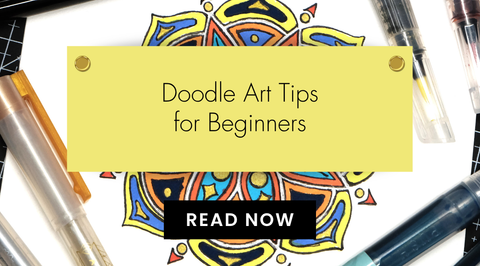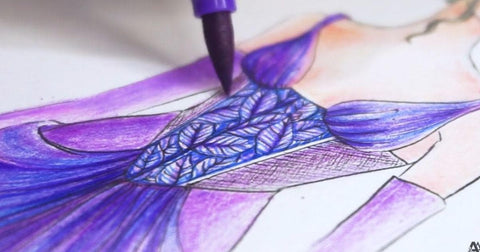Finding Inspiration in Nature: Exploring the Beauty of the Natural World in Your Artwork
Last Updated: July 29, 2024
Are you looking for inspiration in nature? Do you need some tips on exploring nature’s beauty in your paintings and drawings?
Today, we are going to delve into the wonderful world of finding inspiration in nature and how it can elevate your artwork to new heights. Whether you are a beginner looking to enhance your skills or an experienced artist seeking fresh ideas, exploring the beauty of the natural world can be a game-changer for your creative journey.

Find Your Next Inspiration in Nature
Nature has always been a boundless source of inspiration for artists across the globe.
From the mesmerizing hues of a sunset to the intricate patterns found in a single leaf, the natural world offers an endless array of visual delights waiting to be captured on canvas or paper. As watercolor enthusiasts, painters, calligraphy artists, and creators of all kinds, immersing yourself in nature's splendor can breathe life into our work in ways you never thought possible.

Artistry by Altenew Artists' Watercolor 24 Pan Set and Fine Liner Pen Set
Tips for Beginners
For beginner artists, nature provides a perfect starting point to hone your skills and develop your artistic style.
The simplicity of a single flower or the gentle flow of a stream can serve as excellent subjects for practicing basic techniques such as color blending, shading, and perspective. By observing the natural world around you, you can begin to understand the play of light and shadow, the harmony of colors, and the subtle details that make each element of nature unique.
Tips for Experienced Artists
As you progress in your artistic journey, you may find yourself drawn to more complex natural subjects.

Need something else to spark your creativity? Sign up for The Artist In You Online Class!
How to Find Inspiration in Nature for Different Artistic Style
- Watercolor enthusiasts can attest to the magical effects that nature's beauty can have on their artwork. The fluidity and transparency of watercolors perfectly capture the delicate nuances found in petals, skies, and water reflections. By observing the way light dances on the surface of a lake or the way flowers sway in the breeze, watercolor artists can translate these observations into breathtaking works of art that evoke a sense of tranquility and wonder.

- For painters, the natural world serves as an endless muse, offering an abundance of subjects to explore. Whether you prefer plein air painting to capture landscapes en plein air or enjoy bringing elements of nature into your studio, there is no shortage of inspiration to be found. The interplay of colors in a forest canopy, the rugged textures of a rocky shoreline, or the vibrant life teeming within a garden can all fuel your creativity and push you to new heights as an artist.
- Calligraphy artists also find inspiration in nature's beauty, using its organic forms and flowing movements to inform their lettering styles. The graceful curves of a vine, the gentle arc of a wave, or the intricate patterns found in seashells can all influence the design and rhythm of calligraphic compositions. By embracing nature's inherent elegance, calligraphy artists can infuse their work with a sense of harmony and grace that resonates with viewers on a profound level.

Regardless of your preferred medium or artistic style, immersing yourself in nature can have a profound impact on your creative process. The act of observing and interpreting the natural world encourages us to slow down, be present in the moment, and appreciate the beauty that surrounds us. It allows us to see familiar landscapes with fresh eyes and discover new details that spark our imagination.
How can you begin incorporating nature into your artwork?

1. Start by taking regular excursions into natural settings that inspire you. Whether it's a local park, a hiking trail, or simply your own backyard garden, make time to observe and sketch the elements that catch your eye. Pay attention to the interplay of light and shadow, the colors that change with the seasons, and the small details that often go unnoticed.
2. Consider keeping a nature journal where you can document your observations through sketches, written notes, and color studies. This journal can serve as a valuable resource for future artwork and provide a treasure trove of ideas when you're feeling creatively stuck. Additionally, don't be afraid to take photographs as references for your artwork, especially if you're unable to capture every detail on site.

3. Experiment with different techniques and mediums to capture the essence of nature in your artwork. Whether it's creating loose watercolor washes to convey the fluidity of a river or using impasto techniques to mimic the rugged texture of mountains, allow yourself to play and explore. Nature is full of contrasts - from the softness of petals to the jagged edges of rocks - so don't be afraid to experiment with contrasting elements in your art.
4. Lastly, remember that finding inspiration in nature is not just about replicating what you see; it's about capturing the emotions and experiences that nature evokes within you. Whether it's the sense of peace that washes over you as you watch a sunset or the exhilaration of standing atop a windswept hill, infuse these feelings into your artwork. Let your connection with nature shine through in every brushstroke, line, or letter.

Get More Inspirational Tips and Hacks for Artists!
Finding inspiration in nature is a timeless and inexhaustible wellspring for artists of all levels. By exploring the beauty of the natural world, we open ourselves up to a world of creativity, wonder, and endless possibilities.
Lace up your hiking boots, grab your sketchbooks and paints, and venture into the great outdoors. Who knows what magnificent creations await you when you allow nature to be your guide?






